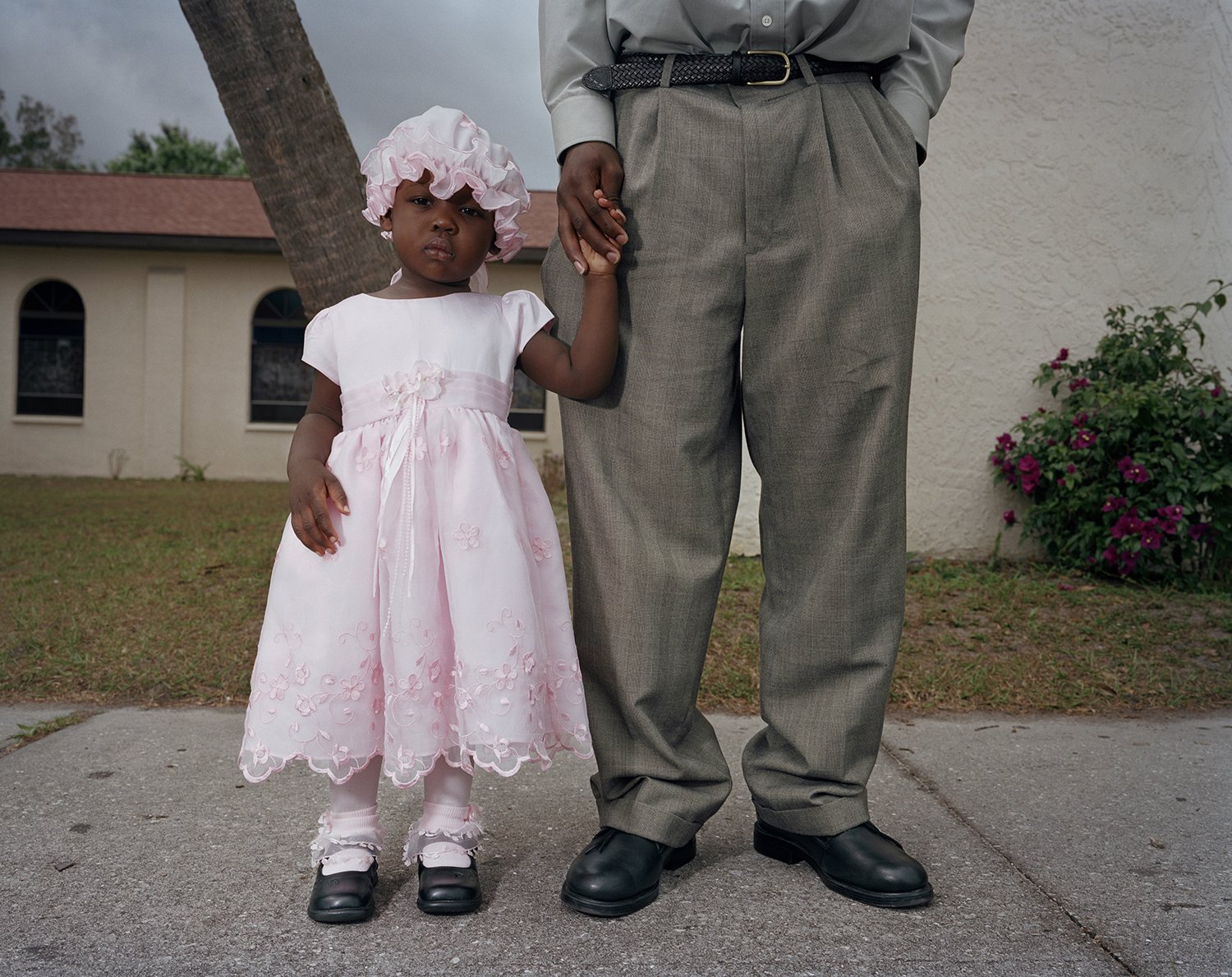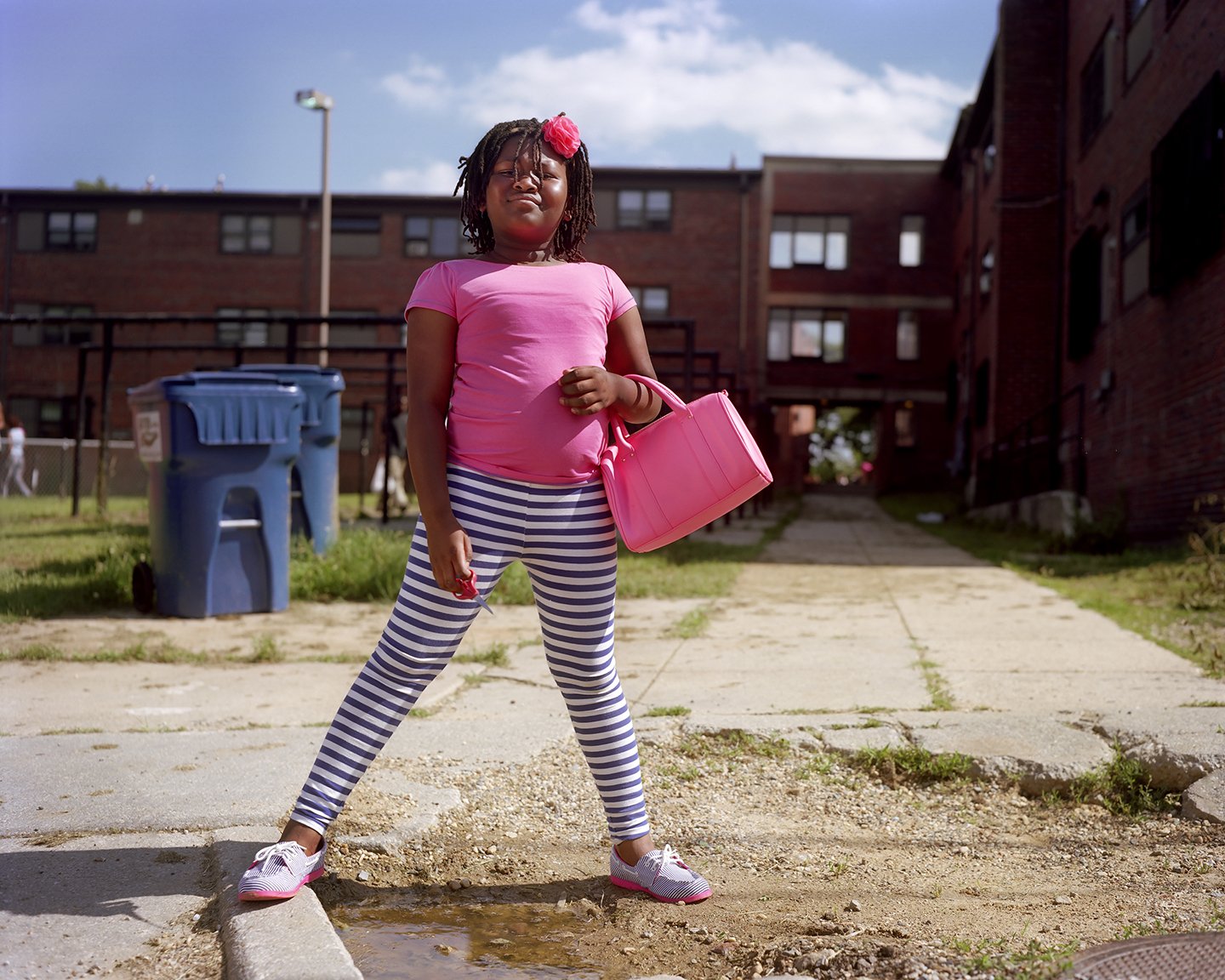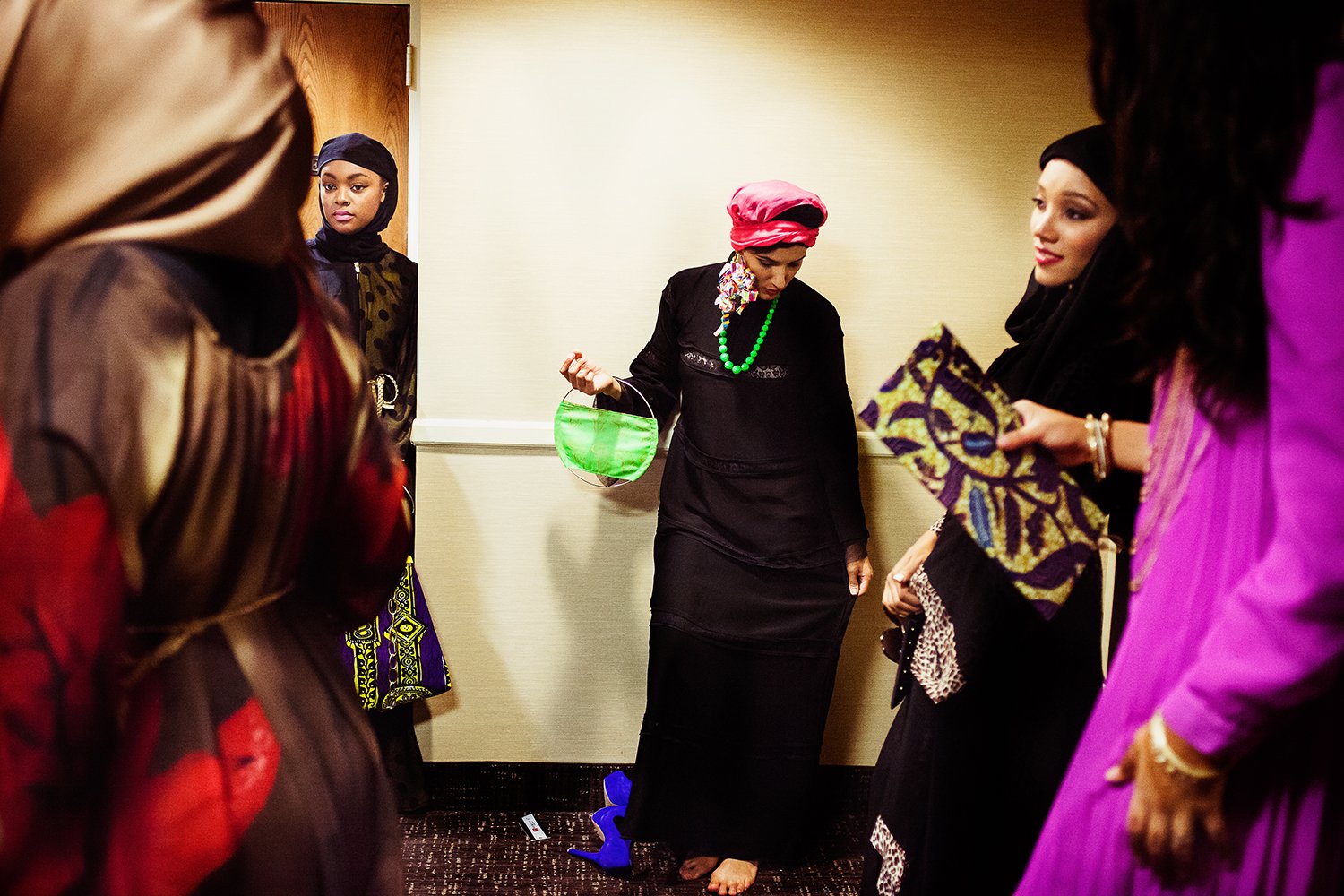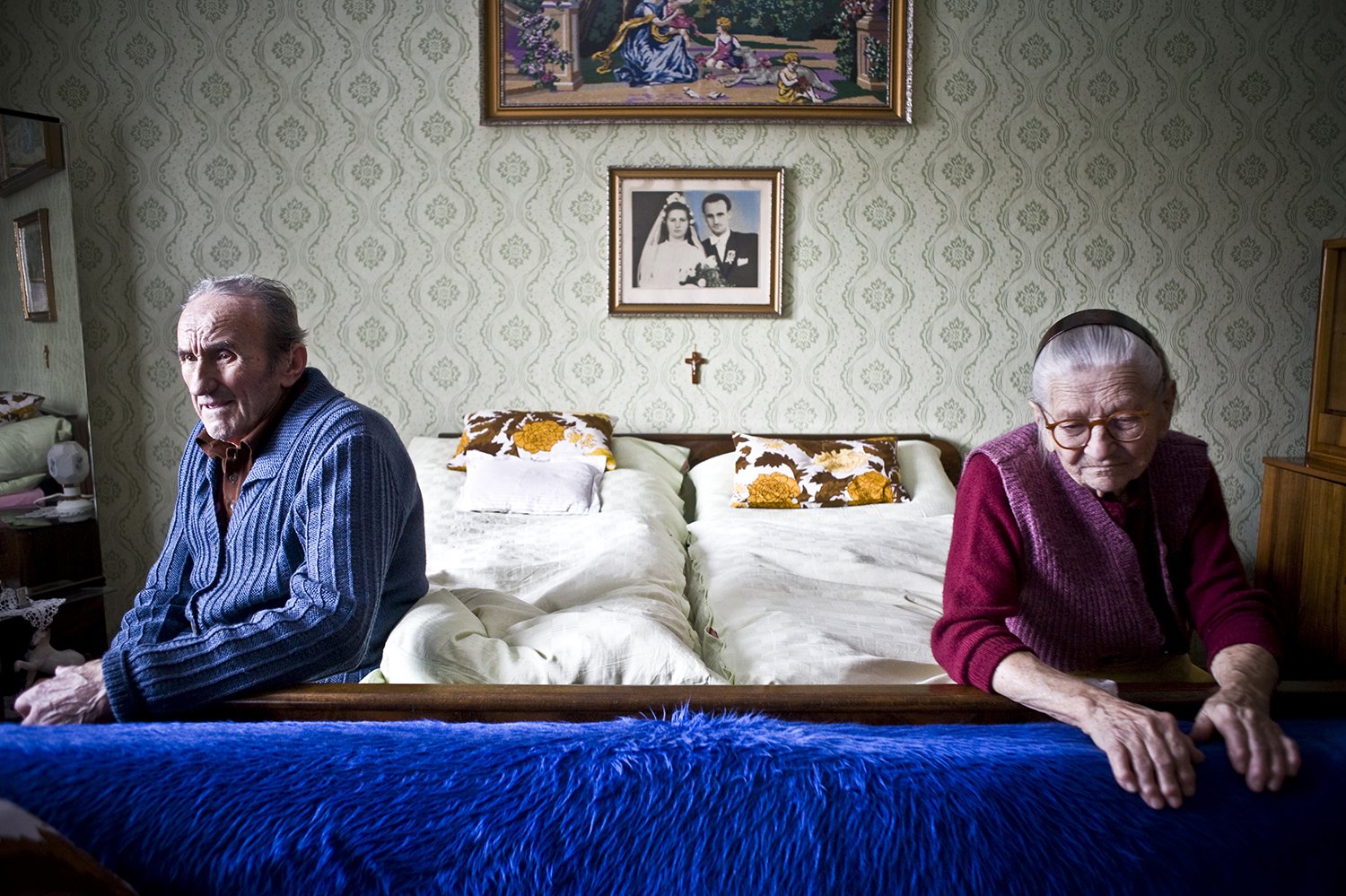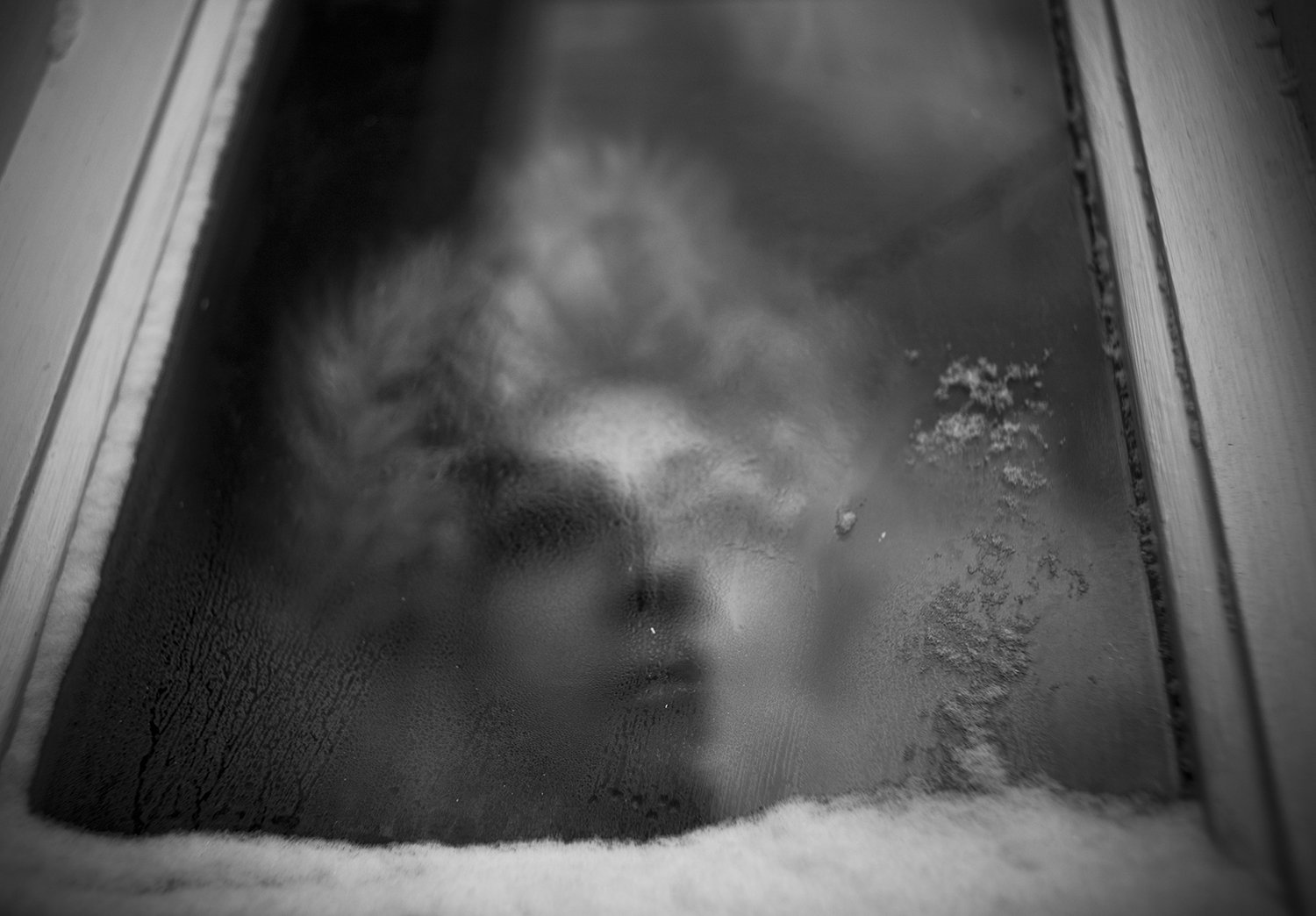(photo by Susana Raab) Haitian Migrant Daughter after Mass, Immokalee, Florida. 2006.
(photo by Gabriella Demczuk, The New York Times) Liz Marquez, 9, from Md., calls for immigration reform during the annual Capitol Christmas tree lighting ceremony on the West Lawn of the Capitol in Washington, D.C. on Tuesday, Dec. 3, 2013. An increase in immigrant deportations have left thousands of families separated across the United States.
(photo by Susana Raab) Zaniya, 50th St NE, Washington, DC 2014 The development of areas East of the river in the years following World War II resulted in a larger proportion of apartment style buildings and public housing units. Perhaps none were more infamous than Benning Terrace, also known as “Simple City”, which was known in the 1990s as the center of violent gang activity. I wanted to photograph some of the larger public housing complexes to give a feel for the landscape so I visited Benning Terrace one afternoon. I became distracted from my original purpose by this elegantly turned out young lady playing with friends outside a building. I photographed her, confidently in charge of her environment, and perfectly appointed. With very little direction Zaniya owned her photograph.
(photo by Lindsey Leger) Lily Monir Matini, center, gets into wardrobe backstage during a fashion show hosted by Reaching All HIV+ Muslims in America (RAHMA) in Washington, DC on Aut. 16, 2014. The clothing and accessories are all made by Muslim women designers from around the US, specializing in creating modest fashion that complies with Islamic tradition.
(photo by Nancy Pastor/The Washington Times) Louise Kurtz, a survivor of the attack on the Pentagon, received burns on 70 percent of her body, she is photographed in her Spotsylvania, Va., home that she takes great pride in decorating herself, Monday August 7, 2006.
(photo by Jacquelyn Martin/AP Photo) Eric Murphy, 13, left, Dayon Murray, 4, and Eriqua Lewis, 8, attend a candlelight vigil in memory of four sisters in southeast Washington on Thursday, Jan. 17, 2008. The four children of Banita Jacks, ages 5 to 16, were found dead in their home on Jan. 9, 2008, and their mother is accused of their murders.
(photo by Gabriella Demczuk) A child looks out the window of a bus at a line of National Guard troops and police officers in Baltimore, where six officers were charged with crimes including murder and manslaughter over the arrest and fatal injury of Freddie Gray, May 1, 2015.
(photo by Meghan Dhaliwal) August 16, 2014 - Kjirsten Gray, a member the Wisconsin National Guard 829th Engineer Co., at cigar night with her company at Forward Operating Base Fenty in Jalalabad, Afghanistan. Gray is part of a group of engineers working to build up contractor housing at FOB Fenty as U.S. military combat operations in Afghanistan end.
(photo by Katherine Frey/The Washington Post) Shekita McCallister, 16, sports earrings with the name of her dead 2-year-old brother, September, 18, 2006. She has joined the Peaceoholics, an organization aimed at quelling violence in Washington, D.C.
(photo by Lexey Swall) Ruby Corado (top, sitting) holds court on the front porch of Casa Ruby in Washington, D.C., where greets the trans men and women who come looking for help with housing, health care, legal services and jobs. "Most of the people who come to Casa Ruby don't have a family that accepts them, or that loves them for the most part. So we have a family here, and it is the concept of a chosen family," she says.
(photo by Ami Vitale) Umou, 16, puts on her best clothes and lipstick for a baby naming ceremony in a small village in the Kalalé District of Benin. She is one of the few girls who goes to school past a young age. The economy is mainly based on agriculture with more than 95% of the population involved with farming. Despite its great potential, crop production in Kalalé remains weak and easily influenced by natural conditions. There is precious little rainfall during the six-month dry season that runs from November to April each year. During the dry season, the land of Kalalé is parched and its people are hungry. Malnutrition is widespread and most girls won't get access to education because the most pressing challenge for all the people of Kalalé is having enough food to eat.
(photo by Amy Toensing/Reportage by Getty Images) Little girl dresses hang on a laundry line on a porch August 1, 2002 in Utuado, Puerto Rico.
(photo by Susana Raab) Four summer girlfriends pose on the beach of Mancora, Peru. 2008.
(photo by Melissa Golden) Rebecca Duffell and Karen Lee decided to cement their relationship by getting married at a Unitarian church in Bethesda, MD, September 1, 2007. They are still not recognized by the U.S. government as a married couple.
(photo by Andrea Bruce/The Washington Post) Lauren Keene, 10, is inspected before her age group's competition in the Miss Southern Belle contest in Grundy, Virginia, one of Buchanan County's fundraisers for the American Cancer Society, December 17, 2007. The county is the poorest in Virginia but is also the source of some of the most successful cancer research fundraisers in the state.
(photo by Allison Shelley) Marie Luisa Badio, 44, waits at University Hospital in Port-au-Prince, Haiti for a set of promised operations for a tumor in her gastric system on March 1, 2010. The hospital's Department of Internal Medicine was one of the few buildings not damaged in the January 12 quake and although the wing is still open to patients, the NGO resources supporting the rest of the hospital-- housed in outdoor tents-- are not available here.
(photo by Katie Falkenberg) A sugarcane worker plants sugarcane for next year's crop in the fields in southeast Dominican Republic.
(photo by Jacquelyn Martin) Children play under mosquito netting inside a dormitory of the Kabanga Protectorate Center, housed in a walled compound for the Kabanga Primary School, in Kabanga, Tanzania on Monday, Aug. 27, 2012. The dorms are overcrowded as more people with albinism have been sent to live at the center by the government for their own safety. Having albinism, a genetic condition characterized by a lack of pigment in the body, can be a death sentence in Tanzania.
(photo by Erin Scott) Girls jump rope together during recess in Karanse, Tanzania. Though problems persist, Tanzania is making significant strides towards gender parity in primary education, as seen in this school, where boys and girls are equally represented.
photo by Allison Shelley) A pair of 15-month-old twins with cholera are held by their mother, right, and sister, center, as they receive IV drips in the intake tent at a cholera clinic set up by Medecins Sans Frontieres in the Tabarre neighborhood of Port-au-Prince, Haiti, November 19, 2010.
(photo by Gabriela Bulisova) In Chlaba, Slovakia during the 2010 summer, the photographer shares final moments with her ailing grandaunt.
(photo by Michelle Frankfurter) A Guatemalan migrant holds her 6-month-old infant son while waiting to board a northbound cargo train in the railhead town of Arriaga in the southern Mexican state of Chiapas.
(photo by Gabriela Bulisova) An Iraqi Christian, who withholds her name for fear of reprisals, worked in Baghdad’s Green Zone as a manager for Bechtel and several other American companies. While there, she met and fell in love with an Iraqi Muslim. Even now, far away from home, her family disagrees with her plan to marry a Muslim. The young couple, hopeful that he will soon be granted asylum in the United States, have planned a secret marriage and an escape from family and religious traditions.

